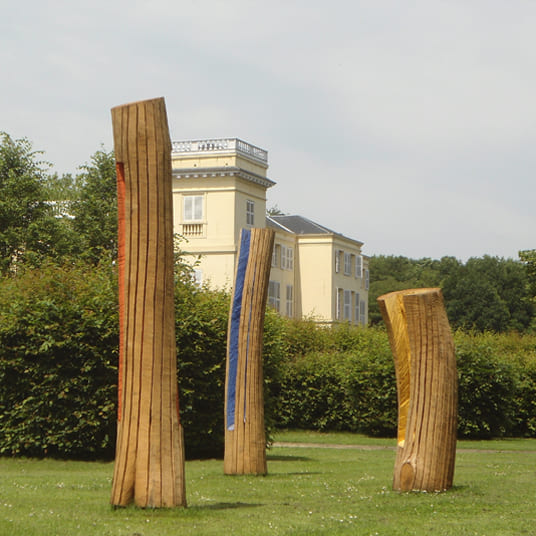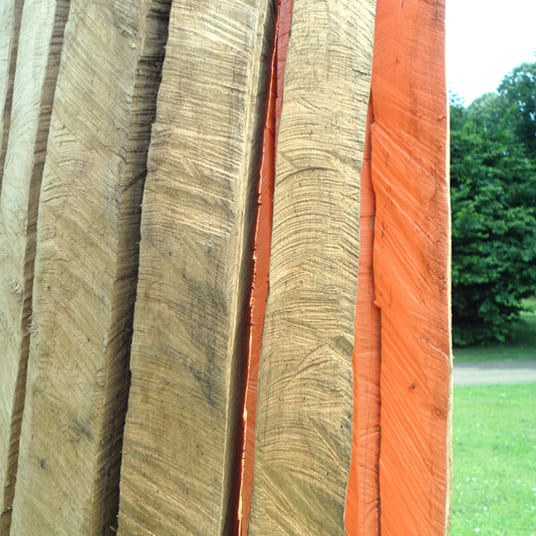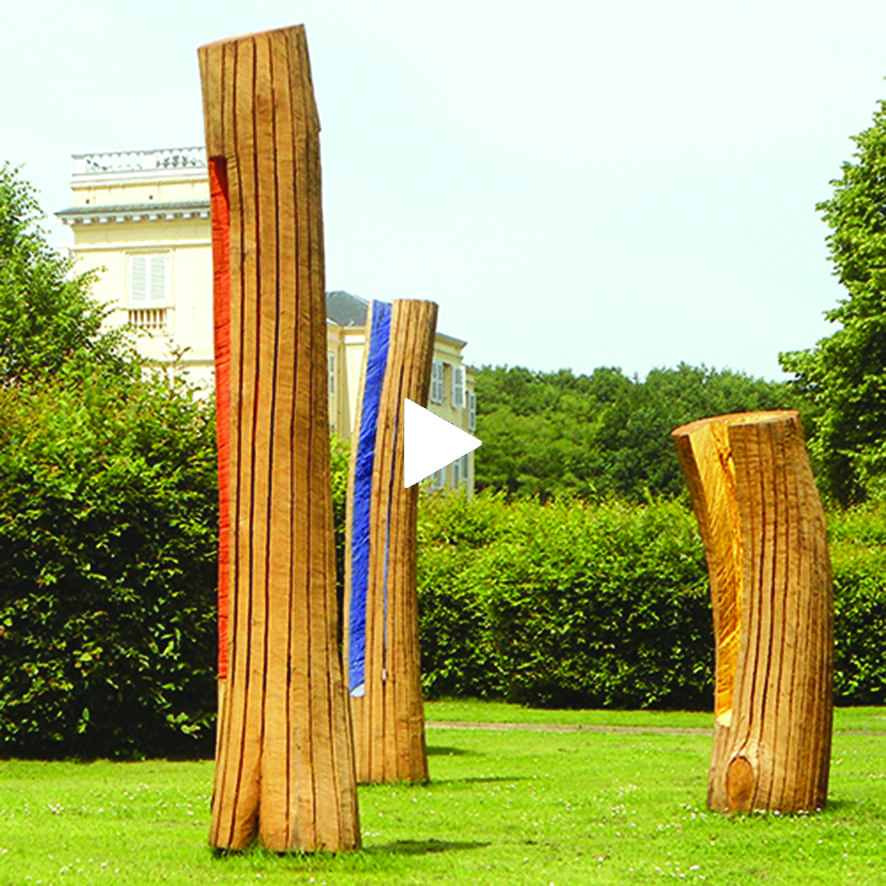After Nature,
Na(ar) De Natuur
19/05 - 15/09 2013
MONUMENTAL VZW
Curator Tom Peters
Kasteel d’Ursel
Hingene, Bornem



An outdoor exhibition with: Stief Desmet, Kris Fierens, Tinka Pittoors, Marc de Roover, Niko Vanstichel, Catherine Claeye, Peter Jacquemyn, Robin Vermeersch, Kim De Ruysscher, Sören Van Laer, Kris Vanhemelrijck en Philippe Gouwy.
'le timbre Dorique' (the Dorian timbre)
Is the result of a questioning about culture and nature and their merging into each other.
Haven't we since time immemorial a tendency to stick a branch or tree trunk straight into the ground, stacking stones on top of each other, build temples and cities, lay out fields and gardens? Can we consider that as man's 'nature'?
Isn't nature that which, under the influence of all that is temporary, always recreates itself. Always the same and yet always different.
What we know about Dorian:
Doric order (from www.architectenweb.nl)
The Doric order is the first of the five classical columnar orders. It is the most widely used order in Greece and originated in the Peloponnese. In the sixth century BC, this order, originally derived from timber construction, was adopted in stone.
Scale (from www.encyclo.nl)
The name Doric is used to denote a particular scale. The Dorian mode in church scales is the scale obtained if you start on D and use only white keys on a piano. Characteristic of the Dorian scale is the major sixth (Dorian sext).
Dialect (from www.encyclo.nl)
Dorian was an Ancient Greek dialect group. Doric was spoken on the Peloponnese, Crete and the southern Cyclades, in southern Italy and Sicily. It was also used as an art dialect for all literature intended to be sung in choir, including outside the borders of the Doric language area.